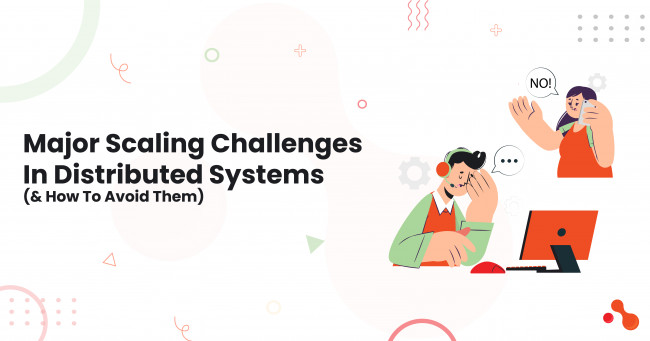Introduction
In the ever-evolving world of technology, businesses constantly seek ways to stay ahead of the competition. One of the most effective ways to achieve this is by adopting new technologies. However, despite the clear benefits, many organizations are held back by beliefs and misconceptions that hinder cos high-ROI technology adoption.
This article aims to explore these beliefs, understand their origins, and provide strategies to overcome them, ultimately enabling businesses to leverage technology for maximum return on investment.
Why Is It Important To Use Technology?

Technology adoption is crucial for businesses to remain competitive, improve efficiency, and enhance customer experiences. New technologies can streamline operations, reduce costs, and open up new revenue streams. For example, cloud computing allows businesses to scale their operations without significant upfront investments.
At the same time, artificial intelligence (AI) and machine learning (ML) can optimize processes and provide valuable insights from data. Despite these advantages, many businesses are slow to adopt new technologies. This hesitation often stems from deeply ingrained beliefs and misconceptions that create barriers to entry. Understanding these beliefs is the first step in overcoming them.
Common Beliefs Hindering Technology Adoption

Before delving into strategies for overcoming these barriers, it is crucial to understand the nature of the obstacles. These range from a broad category of technological, financial, organizational, and psychological barriers.
High Initial Costs:
One of the most prevalent beliefs is that adopting new technology requires substantial initial investments. This belief is widespread among small and medium-sized enterprises (SMEs) that may not have the financial resources of larger corporations.
The fear of high costs can prevent these businesses from even considering new technologies. This is despite the potential for long-term savings and increased ROI.
Complexity and Lack of Expertise:
Many businesses believe that new technologies are too complex to implement. They require specialized expertise that they do not possess. This belief can lead to a reliance on outdated systems and processes. This ultimately limits the organization's ability to compete in a rapidly changing market.
Disruption to Operations:
There is often a fear that adopting new technology will disrupt existing operations and lead to downtime. This belief is firm in industries where continuous operation is critical. This includes industries like manufacturing and healthcare.
The perceived risk of disruption can make businesses hesitant to implement new solutions, even when they stand to benefit significantly in the long run.
Uncertain ROI:
Another common belief is that the ROI of new technology is uncertain. Businesses may be skeptical about whether the benefits outweigh the costs, leading to a reluctance to invest in new solutions. This belief is often fueled by past experiences with failed technology implementations or by a lack of understanding of how to measure and achieve ROI.
Resistance to Change:
Human nature is inherently resistant to change, which extends to adopting new technologies. Businesses may be comfortable with existing processes and reluctant to adopt new tools and systems. This resistance can be a significant barrier to technology adoption, as it can slow down or even derail implementation efforts.
Strategies to Overcome False Beliefs
Overcoming these beliefs requires a strategic approach that addresses the underlying concerns. It provides clear evidence of the benefits of technology adoption. The following strategies can help businesses break through these barriers and achieve high-ROI technology adoption.
Educate and Inform:
Education is a powerful tool for overcoming technology adoption misconceptions. Businesses should invest in training and development programs. They help employees and management understand the benefits and potential of new technologies. This can include workshops, seminars, and online courses that provide practical knowledge and skills.
Start Small and Scale:
One way to mitigate the fear of high initial costs and disruption is to start with small-scale pilot projects. Implement new technology on a limited basis. This way businesses can test its effectiveness and adjust before scaling up. This approach allows for a gradual transition, minimizing disruption and providing proof of concept. Small-scale pilots also help build internal support for new technology.
Partner with Experts:
Businesses can partner with technology experts and consultants to address concerns about complexity and lack of expertise. The professionals, like Acquaint Softtech can guide on selecting, implementing, and optimizing new technologies. This reduces the burden on internal teams. By leveraging external expertise, businesses can ensure a smoother and more successful adoption process.
Partnerships with technology vendors can also provide access to ongoing support and updates. This ensures that the technology continues to deliver value over time. This can help address concerns about long-term ROI and mitigate the risk of obsolescence.
Develop a Clear ROI Framework:
To overcome skepticism about ROI, businesses should develop a clear framework for measuring and achieving ROI from new technology. This includes setting specific, measurable goals and identifying key performance indicators (KPIs) that align with business objectives. By tracking progress and demonstrating tangible benefits, businesses can build confidence in the value of new technology.
Regularly reviewing and adjusting the ROI framework can also help ensure that the technology continues to deliver value over time. This proactive approach allows businesses to address issues early and make data-driven decisions about future investments.
Foster a Culture of Innovation:
Creating a culture of innovation within the organization can help overcome resistance to change. Open communication is also essential in fostering a culture of innovation.
Embrace a Collaborative Mindset:
A collaborative mindset is the cornerstone of any successful virtual team. It involves fostering an inclusive culture, embracing diversity, and promoting openness. Recognize the diverse backgrounds and skill sets of each team member. This way Laravel teams can harness fresh perspectives and innovative ideas.
Encouraging team members to express their thoughts and opinions openly can facilitate a more cohesive and understanding work environment.
Utilize the Right Tools:
The use of collaborative tools is non-negotiable in today's remote work landscape. Real-time communication tools like Slack, Microsoft Teams, or Discord can provide seamless communication channels for organized discussions. Project management software such as Jira, Trello, or Asana can help manage tasks and priorities transparently. Moreover, version control systems like GitHub or GitLab are essential for collaborative coding. This allows team members to work on the same codebase and track modifications.
Structured Communication:
Regular and structured meetings are vital for keeping everyone on the same page. Daily stand-ups can help team members discuss their progress, share blockers, and plan the day's work. Additionally, regular retrospective meetings can provide insights into what's working well and what areas need improvement.
Conflict Resolution:
Understanding the unique environment of virtual teams is crucial for conflict resolution. Miscommunications, differing expectations, and cultural differences are common reasons for conflicts in virtual teams. Effective communication, understanding, and collaborative problem-solving ensure the team works harmoniously towards common goals.
Overcoming Technological Challenges:
Technological challenges such as connectivity issues or unfamiliarity with digital tools can hinder effective communication. Establish a backup communication plan for technical issues. This can be like sharing presentation slides in advance. This can mitigate these risks as will providing a designated chat channel for troubleshooting.
The Role of Leadership in Technology Adoption
Leadership plays a critical role in overcoming beliefs that hinder technology adoption. Influential leaders must advocate for new technology and address their team’s concerns and needs. The following leadership strategies can help facilitate successful technology adoption:
- Vision and Commitment: Leaders must articulate a clear vision for how new technology will benefit the organization. They must commit to seeing the implementation through. This involves setting strategic goals, securing necessary resources, and focusing on long-term benefits.
- Communication and Transparency: Open and transparent communication is essential in addressing concerns and building trust. Leaders should provide regular updates on the progress of technology adoption efforts. Share successes and challenges, and be open to employee feedback.
The Future of Technology Adoption
As technology evolves, businesses must remain agile and proactive in adopting new solutions. Emerging technologies such as AI, blockchain, and the Internet of Things (IoT) can revolutionize industries and create new growth opportunities. However, the beliefs and misconceptions that hinder technology adoption today will continue to pose challenges in the future.
Hire remote developers from a professional software development company like Acquaint Softtech to gain an upper edge. We have the expertise and the knowledge to overcome the misconceptions and develop state-of-the-art solutions.
To stay ahead, businesses must cultivate a mindset of continuous learning and innovation. This involves staying informed about technological advancements, experimenting with new solutions, and regularly reassessing and updating technology strategies. Foster a culture of innovation and proactively address barriers to technology adoption. This way businesses can unlock the full potential of new technologies and achieve sustained success.
Trust Acquaint Softtech, a software development outsourcing company in India with over 10 years of experience. We have already developed over 5000 projects for clients worldwide.
Conclusion
Overcoming beliefs that hinder high-ROI technology adoption is essential for businesses to remain competitive and thrive in a rapidly changing world. It is important to understand and address common misconceptions and foster a culture of innovation. This way businesses can successfully navigate the challenges of technology adoption.
Leadership is crucial in driving these efforts, as well as providing vision, communication, and support to ensure successful implementation. With a proactive and strategic approach, businesses can leverage new technologies. This helps to achieve significant cost savings, improved efficiency, and enhance customer experiences. It ultimately drives long-term growth and success.
















